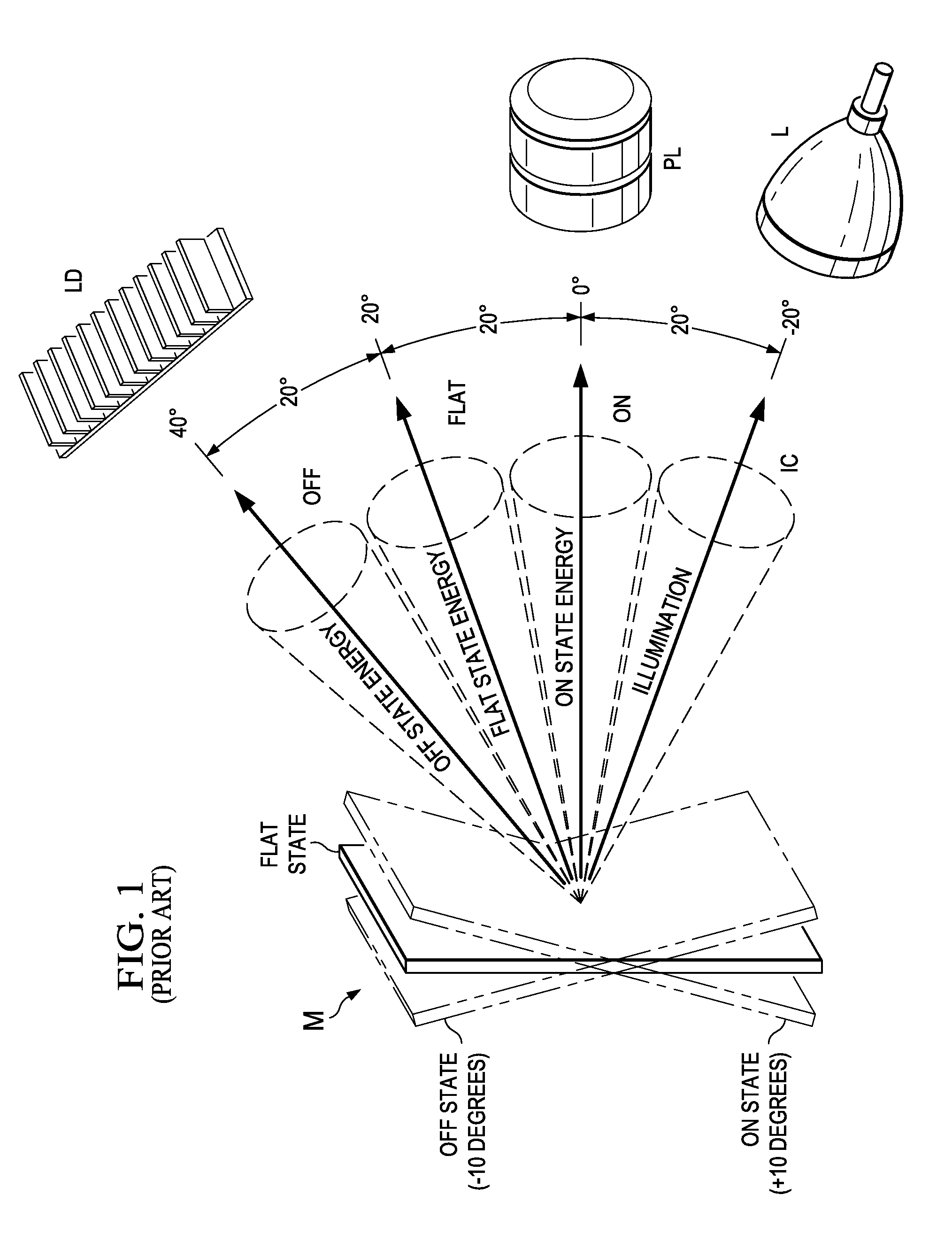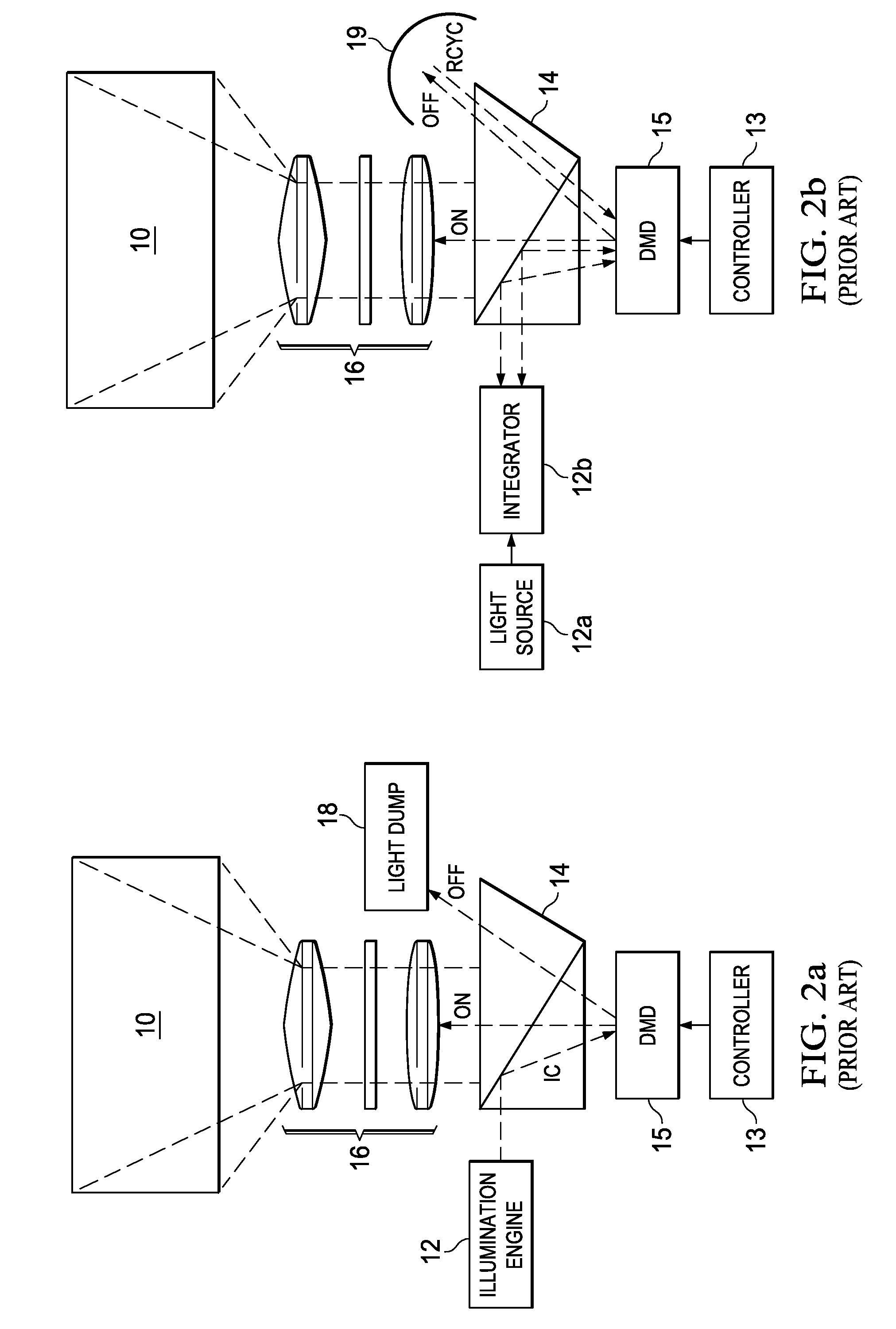Light Recycling in a Micromirror-Based Projection Display System
a technology of projection display and micromirror, which is applied in the field of projector display systems, can solve the problems of inefficiency in light usage in micromirror-based displays, high cost of multiple-modulator display systems, and inefficiency in sequential color display systems, so as to reduce contrast in displayed images, effectively recycle, and efficiently off-pixel light
- Summary
- Abstract
- Description
- Claims
- Application Information
AI Technical Summary
Benefits of technology
Problems solved by technology
Method used
Image
Examples
Embodiment Construction
[0041]The present invention will be described in connection with its preferred embodiment, namely as implemented into a rear projection display system utilizing one or more digital micromirror devices as spatial light modulators. However, it is contemplated that this invention may also be beneficial as applied in other types of systems involving digital micromirror devices, as well as other optical systems. Accordingly, it is to be understood that the following description is provided by way of example only, and is not intended to limit the true scope of this invention as claimed.
[0042]FIG. 3 schematically illustrates the functional elements of projection display system 25 according to the preferred embodiments of this invention. The physical arrangement and construction of these elements will be described in further detail below; the illustration of FIG. 3 is presented in a functional manner, to provide functional context for that detailed description.
[0043]As shown in FIG. 3, proj...
PUM
 Login to View More
Login to View More Abstract
Description
Claims
Application Information
 Login to View More
Login to View More - R&D
- Intellectual Property
- Life Sciences
- Materials
- Tech Scout
- Unparalleled Data Quality
- Higher Quality Content
- 60% Fewer Hallucinations
Browse by: Latest US Patents, China's latest patents, Technical Efficacy Thesaurus, Application Domain, Technology Topic, Popular Technical Reports.
© 2025 PatSnap. All rights reserved.Legal|Privacy policy|Modern Slavery Act Transparency Statement|Sitemap|About US| Contact US: help@patsnap.com



